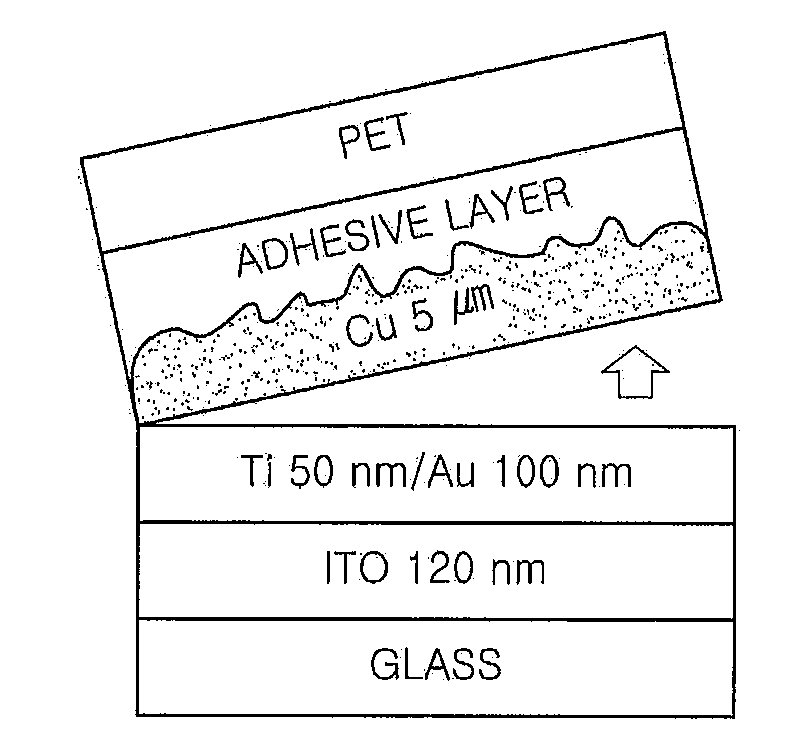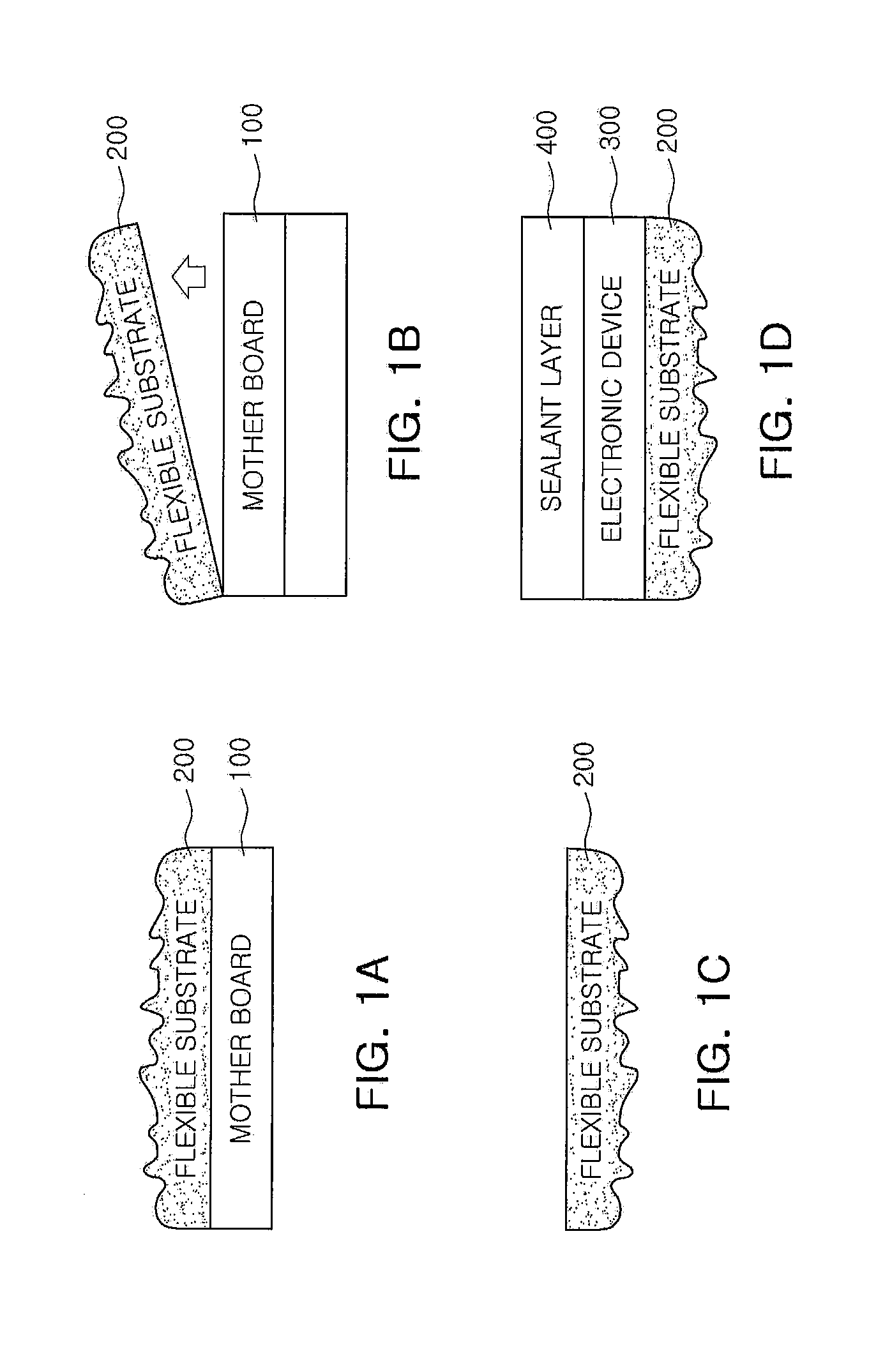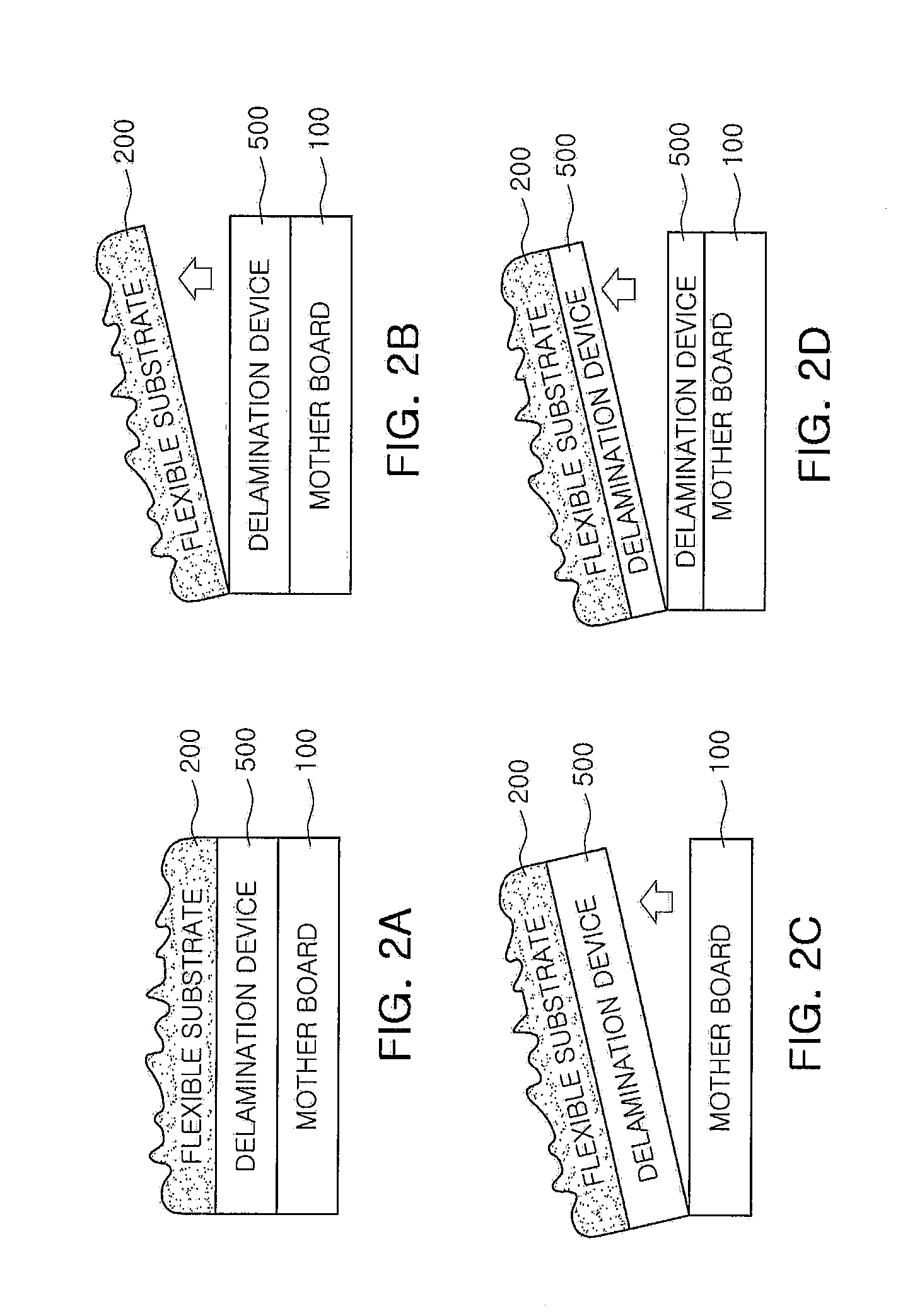Flexible electronic device, method for manufacturing same, and a flexible substrate
a flexible electronic and substrate technology, applied in the direction of organic semiconductor devices, sustainable manufacturing/processing, final product manufacturing, etc., can solve the problems of reducing yield, reducing yield, and limiting the use of flexible substrates for electronic devices such as electronic devices, so as to achieve the same degree of surface roughness, high performance and flexible electronic
- Summary
- Abstract
- Description
- Claims
- Application Information
AI Technical Summary
Benefits of technology
Problems solved by technology
Method used
Image
Examples
example 2
[0074]As illustrated in FIG. 2A, unlike Example 1, in Example 2, a flexible substrate 200 was manufactured through a method of forming a delamination layer 500 between a motherboard 100 and the flexible substrate 200. When the delamination layer 500 is formed thus, the flexible substrate 200 may be separated from an interface of the flexible substrate 200 (FIG. 2B), from an interface between the motherboard 100 and the delamination layer 500 (FIG. 2B), or from an inner surface of the delamination layer 500 (FIG. 2D). At this time, the case of FIG. 2B does not need a subsequent process, but the cases of FIGS. 2C and 2D may further include removing the delamination layer 500.
[0075]In Example 2 of the present invention, an ITO layer was formed as the delamination layer to a thickness of 120 nm on a glass substrate, a flexible substrate having a Ti / Au / Cu multilayered structure was formed on the ITO layer by respectively forming a Ti underlayer for the formation of a Cu layer and an Au s...
example 3
[0076]FIG. 3 schematically illustrates a method of manufacturing a flexible electronic device according to a third embodiment of the present invention. As illustrated in FIG. 3, in a method of manufacturing a flexible electronic device according to a third embodiment of the present invention, a flexible substrate 200 was formed on a motherboard 100 with a delamination layer 500 interposed therebetween (FIG. 3A), and an arbitrary substrate 600 was adhered on the flexible substrate 200 with an adhesive layer 700 interposed therebetween (FIG. 3C). Thereafter, the motherboard 100 formed on the flexible substrate 200 was separated using the delamination layer 500 (FIG. 3D), and an electronic device 300 and a sealant layer 400 were formed on a separated surface of the flexible substrate 200 to manufacture a flexible electronic device (FIG. 3E).
[0077]That is, the method in the third embodiment is different from that in the first embodiment in that it uses the arbitrary substrate 600 for ha...
PUM
| Property | Measurement | Unit |
|---|---|---|
| surface roughness | aaaaa | aaaaa |
| thick | aaaaa | aaaaa |
| temperature | aaaaa | aaaaa |
Abstract
Description
Claims
Application Information
 Login to View More
Login to View More - R&D
- Intellectual Property
- Life Sciences
- Materials
- Tech Scout
- Unparalleled Data Quality
- Higher Quality Content
- 60% Fewer Hallucinations
Browse by: Latest US Patents, China's latest patents, Technical Efficacy Thesaurus, Application Domain, Technology Topic, Popular Technical Reports.
© 2025 PatSnap. All rights reserved.Legal|Privacy policy|Modern Slavery Act Transparency Statement|Sitemap|About US| Contact US: help@patsnap.com



